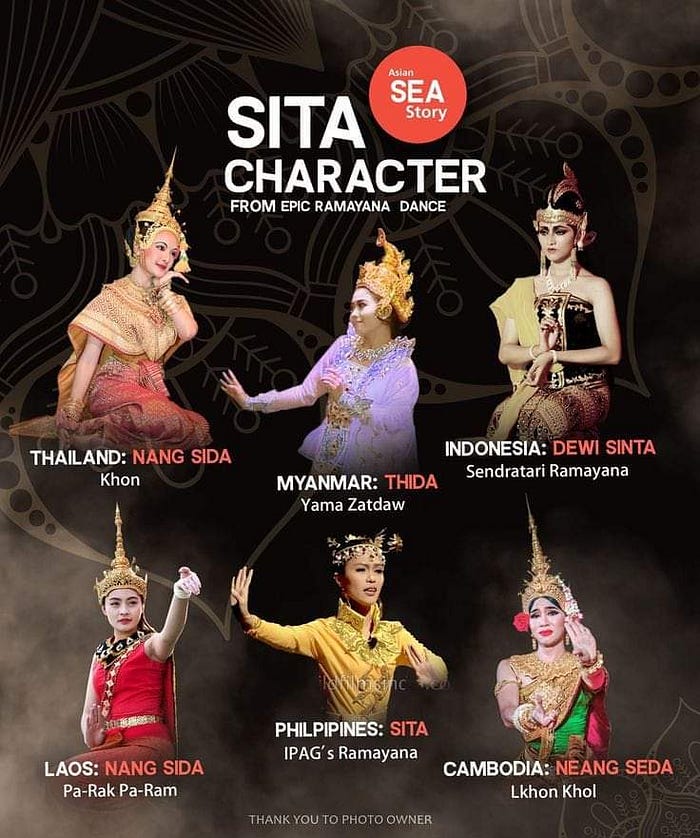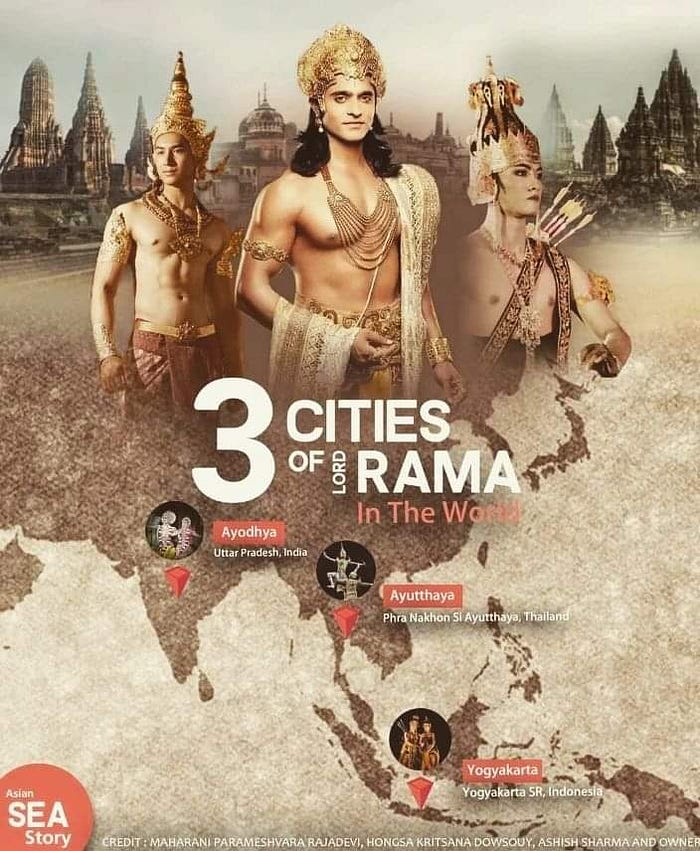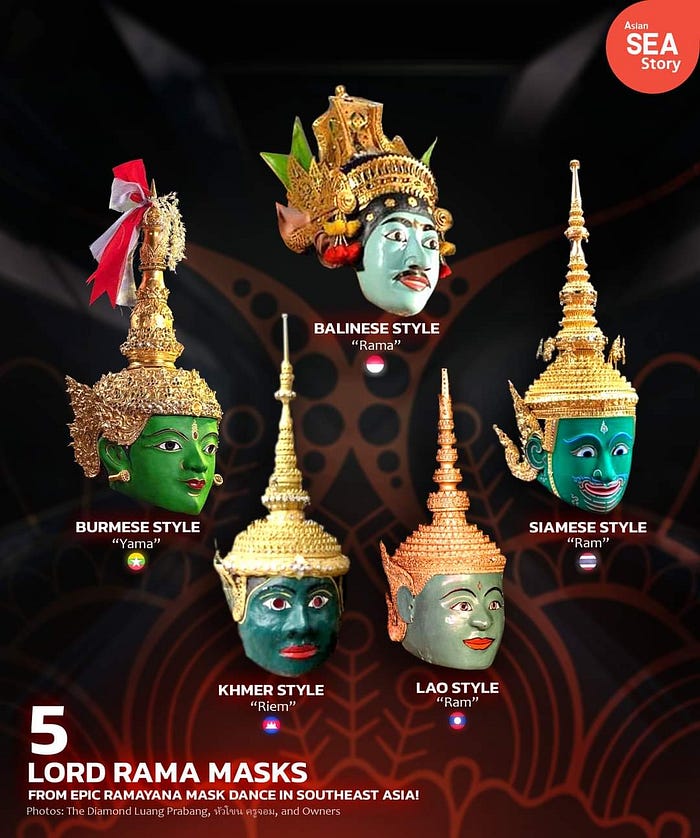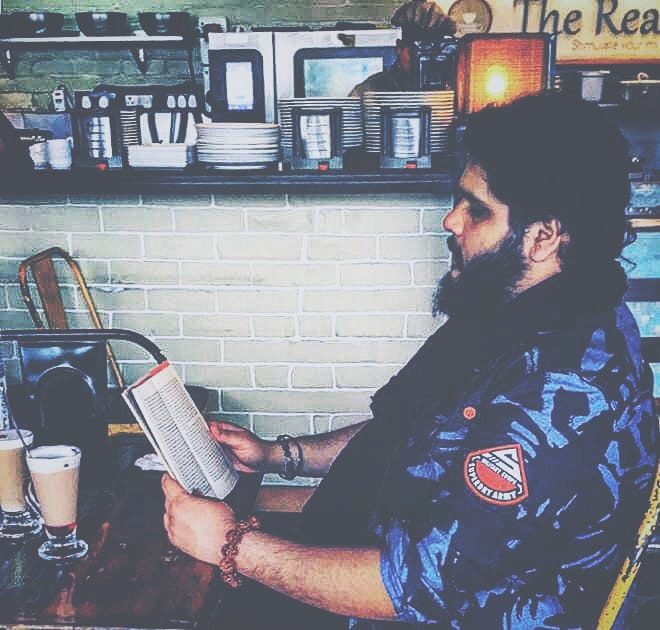Bhagwan Ram and his legacy are not limited to this subcontinent as his influence goes beyond these borders to numerous countries and continents.
Ram Navami is the birth of one of the most important gods, someone who continues to inspire and instil hope amongst the Hindu and other Indic faith across the world. However, I was not always awakened to this fact and being part of the liberal-communist ecosystem, the name and the existence of Bhagwan Ram were always challenged and referred to as a mythological figure. Such was the obsessed love-and-hate relationship that went to a level of debauchery in the eyes of the clueless Hindu. Be it in education or general talk. The whole notion of rejection of traditional thought is not limited to the left, it’s visible in the non-left as well.
Then the whole Ram Mandir issue always presented itself. Once in 2016, when I broke away from this conventional “school or hospital should be built in Ayodhya” garbage, many of my liberal and left-leaning friends of those times mocked me and said this will never happen in your life. Jokes on them.

Street play is a very attractive form of theatre that attracts almost everyone by sheer virtue of the artist’s ability to create Halla in the middle of any campus or area. There is no rocket science to the fact that the left dominates this particular field in particular. Whenever any street play is to happen, the artists or the teams come together and make a clarion call to attract the public and bring them to their place of performance. One such particular slogan was in terms of mocking bhagwan Ram and the Ram Mandir. It used to go as “Ram Ji ka Mandir Banega Dhoom Dhaam se” followed by an imitation of “Jai Shree Ram” like most bhaktas of Ram Chandra do. I should know this because when I was in a street play during my time as a liberal, I have on countless occasions done the same. Be it in my college or others, in Shri Ram centre of Arts and the National School of Drama as well. Don’t take this in any positivity, they were mocking God and his followers only. You only realise it once you come out of this mindset.
Therefore, Ram Chandra is such a figure that not only brings hope and immense strength in the heart of those Hindus who love to worship and follow their traditions but even to those who are conditioned to rant like a blithering buffoon, wanting to trigger the people around him or her. Such is his presence in our history that nobody can ignore our bhagwan and stay relevant with time. Once you actually do bhakti for him, you get a sense of belonging that even his param bhakta Anjaneya did during his life. Something he continued to spread forever.
But Bhagwaan Ram and his legacy are not limited to this subcontinent only. In fact, his influence goes beyond these borders. Here is a collection of information provided by a few acquaintances I know, collected.

The City of Ayuthaya – Ayodhya of Thailand
The city of Ayuthaya is located about 70 km north of Bangkok. King Ramathibodi who named it after the birthplace of Lord Rama founded it in 1350. He envisaged “Ramarajya” for his Kingdom, as the King was “Devaraja” or “God King”, particularly Vishnu incarnate. Ayuthaya was a glorious, wealthy and flourishing island city located at the confluence of three rivers, the Chao Phraya, the Pasak, and the Lopburi. It was the envy of not only its neighbours but also visiting and trading Europeans. It housed a population of 1 million comprising not just Thais but people belonging to some 40 nationalities. The French visitor Jean de Lacombe has recorded in awe that the palace of the King, Lord Rama Incarnate according to the Thais, “Is a dwelling worthy of an Emperor of the whole world”. In its heydays, it has been recorded by outside observers that Ayuthaya city was so magnificent that London at the time seemed a mere village in comparison.
The majestic city was the capital of the flourishing Siamese Buddhist kingdom for 417 years till it was captured and destroyed by the invading Burmese forces in 1767 forcing the inhabitants to abandon the city. Fifteen years later Thailand’s General Chao Phraya Chakkri became king and moved the capital to Bangkok, to the eastern bank of the river Chao Phraya. The Chakkri rulers adopted the name Rama (today, the 10th ruler of that dynasty occupies the throne as King Vajiralongkorn, with the title, King Rama X). Though Thailand is Buddhist, the dominant influence of the Ramayana is as evident here as it is in India, perhaps even more. The royal palace has scenes from the epic painted on its walls. Though Ayutthaya, its 200,000 people and 4,000 Buddhist temples were looted and destroyed, it was restored by the Chakkri dynasty, and the resplendent Buddhist temple in the ruins of Ayutthaya is today a major tourist attraction.…
Although Thailand is today predominantly Buddhist, there are traces of Hindu influence, visible mostly in the court ceremonials. Until recently, the court Rajguru Brahmins cast horoscopes, consulted omens and performed worship of both Hindu and Buddhist deities. Ceremonies of coronation, tonsure, cremation, and lesser rites connected with agriculture were developed by the Brahmins.
The Siamese call their coronation after its ancient Sanskrit designation, the Rajabhiseka. The entire complex of coronation ceremonies, such as homa (sacrifice of Fire), purificatory rites, ablutions, and anointment, is closely modelled on Hindu rituals and is presided over by the Brah Maha Raja Guru. The tonsure ceremony in Siam is a rite of initiation of youths, corresponding to the Hindu Cudakarma Mangala, which is a very important Hindu Samskara. Cremation, an old Vedic rite, is the only means of disposal of the remains of deceased royalty in Siam.
King Rama IX s residence is named Chitralada. The Thai national and royal emblem is the Vishnu vahana of Garuda. It is interesting to note the pervasive influence of Hinduism in Thailand even today. The Hindu Trinity of Brahma, Shiva and Vishnu is worshipped with unrelenting reverence. Vishnu and his avatar of Rama are obviously the most revered of all. The walls of the magnificent Temple next to the King’s Grand Palace have mural scenes from the entire story of Ramayana painted on them. This temple was modelled closely on the destroyed Ayuthaya temple. Ramas Sita has not been forgotten either. In the “Royal Field”, north of the temple, which is the traditional site for royal cremations and for the royal Ploughing ceremony, a statue of Mae Thorani (“Mother Earth”) stands on a white pavilion. As the original manuscript containing the Ramayana was burnt in Ayuthaya s carnage, King Rama I wrote the Thai version of the Ramayana called Ramakien in a poetic format. His son, Rama II, penned a much shorter adaptation of it. It is this story that is the main feature in classical Thai dance-drama to this day.
Even today, the Kings of Thailand bear the Royal title is Rama, a Hindu avatar, and the story of Ramayana is depicted on the Royal Palace and temple walls of Bangkok. Hindu festivals such as Dashahara, commemorating the victory of Rama over the demon king Ravana, are still observed in Thailand. The Thais, like the Hindus, still believe in Vishnu or Narayana (Phra Narain), and Mahadeva or Siva, and dislike the asuras (asuns) as the enemies of the devas. Famous Indian works, such as the Ramayana and Mahabharata, and Shakuntala have formed the basis of some of the outstanding Siamese literature. The Ramayana, known in Siam as the Ramakien “Ram – Akhyan” where Akhya is a Sanskrit word meaning “rendition of the story of”. The tales of the Ramakien are similar to those of the Ramayana, though transferred to the topography and culture of Ayutthaya, where the avatar of Phra Narai (the Thai incarnation of Vishnu) is reborn as Phra Ram.
The Thai kingdom of Ayutthaya, named after Rama’s capital of Ayodhya, was itself sacked and destroyed by invading armies from Myanmar in the 18th century, resulting in the loss of literary works. When a new capital was established in Bangkok shortly after, one of the first tasks of King Rama I, who took on the name of the hero of the epic, was to have the lost Ramakian composed again. The episodes were rearranged, however, in a more linear time fashion. In addition, Tamil tradition probably played an important role in the royal literary effort, for the Thai epic has many features in common with southern Indian ideas, such as strong females (which also is an indigenous Thai trait), soul transfer, and characters magically transforming themselves into other beings. Many of the ogres have special powers or weapons, and they are defeated in unique ways with help from Vibhisana. Hanuman becomes a lover to many women and has several wives, thus completely going against the entire Indian tradition in which he remains celibate and unmarried. The brothers of Rama and even his sons battle against the surviving ogres and destroy them, thus repeating several motifs and greatly increasing the length of the epic.

Phendin-Klang Rama II (1809-24), was an outstanding poet, who produced Thai translations of the Hindu Ramayana. It is regarded as a Siamese classic. Knowledge of this work is as essential for a cultured Siamese as Homer used to be for a European. The epic and Puranic literature of India constituted the principal source of inspiration not only for Siam but for the whole of Southeast Asia. It provided the themes for classical theatre, shadow theatre, and marionette shows.
Indian influence is clearly seen in Siamese dance, drama, and music. Many of the themes of Siam’s various dance dramas (lakhon-ram) are drawn from Indian stories: for example, the story of Savitri and Satyavan. Many Thai musical instruments closely resemble those of India. The Siamese legal system is directly descended from the Manusmriti. The Hindu Dharmasastras provided the framework for Siamese justice.
Thai language too bears a close affinity with India. An indication of the close linguistic affiliation between India and Thailand can be found in common Thai words like Ratha Mantri, Vidhya, Samuthra, Prachinpuri, Karuna, Prannee etc. which are almost identical to their Indian counterparts. The Thai language basically consists of monosyllabic words that are individually complete in meaning. His Majesty King Ramkhamhaeng the Great created the Thai alphabet in 1283. He modelled it on the ancient Indian alphabets of Sanskrit and Pali through the medium of the ancient Indian alphabets of Sanskrit and Pali through the medium of the old Khmer characters. The tales of the Ramakien are similar to those of the Ramayana, though transferred to the topography and culture of Ayutthaya, where the avatar of Phra Narai (the Thai incarnation of Vishnu) is reborn as Phra Ram.
Even though Ayuthaya was razed to the ground, neither did the religious fervour of the Thais suffer nor was there any damage done to the legacy of Rama. On the contrary, the Thais believe the “Chakri” (or Vishnu Chakra -“Wheel”) dynasty has given them an unbroken succession of Rama incarnates so that they may be ruled over by his divine blessings.
While the Burmese army burned the city to the ground, many of its stone temples and Buddhist monasteries survived. The structural design of the temples and monuments in Ayutthaya is a mesmerizing mixture of Hindu-influenced Khmer (ancient Cambodian) style and early Sukhothai style. The Khmer influence can be seen in some of the tall Prangs (reliquary towers that look like the South Indian temple Gopurams) that closely resemble the ruins of Angkor Wat.

Wat Phu Khao Thong
The monastery of the Golden Mount built by King Ramesuan lies on the outskirts of Ayutthaya, Wat Lokayasutha which has the largest reclining Buddha in Ayutthaya, Wat Phra Sri Sanphet, the royal temple beside the ancient Grand Palace, once the most magnificent temple of the Kingdom of Ayutthaya, Wat Phra Mahathat, one of the most important monasteries of the Ayutthaya kingdom and the Ban Pa-in Royal Summer Palace.
The Kings who commissioned the building of the temples and statues practised the tradition of embedding precious gems or gold into the statues and into the foundation stone of the structures. When the city was destroyed, looters and vandals descended upon the statues beheading the Buddhas to get to the precious stones. Looters also sold the Buddha heads to private collectors and museums in US and Europe.
Wat Phu Khao Thong
It is also known as the Temple of the Golden Mountain, which refers to the golden figurehead built into the stupa, or chedi as the pagoda-like structure on top of the temple is known. Built by King Ramesuan in 1387 to commemorate his victory over the Burmese army, the stupa rises more than 70 meters above the Chao Phraya River. The most magnificent feature of this Chedi is its square pedestal with 12 indented corners. The temple grounds also include an active monastery.
Wat Lokayasutharam
All that remains of the royal palace that once stood at Wat Lokayasutharam is a single prang and a massive reclining Buddha. Called Phra Buddha Sai Yat (Reminded me of Vishnu’s Anantha Sayana. Sai Yat does sound like Sayana), the Buddha stands a towering 8 meters high and 37 meters long. Made of brick and covered with plaster, the reclining Buddha faces the east with its head resting on a lotus blossom.

Wat Mahathat
Built in 1374 A.D., this was considered the most sacred monastery in the Kingdom of Ayutthaya. It sits in front of the grand palace at Phra Ram Park and is also known as the ‘The Temple of the Great Relic’ because of revered Buddha relics housed in its main prang. The temple grounds are expansive. The central prang, which stood a mighty 50 meters tall, was surrounded by stupas, chedis and many different Buddha statues.
Wat Phra Sri Sanphet
The royal temple of Wat Phra Si Sanphet stands on the grounds of the former royal palace, and its three Chedis (pagoda-like structures) were built to celebrate and house the remains of a line of three kings who ruled Ayutthaya from 1350 A.D. to 1448 A.D. It was once considered the grandest and most beautiful temple in the Kingdom. The Wat Phra Si Sanphet was the temple of the royal family and was used exclusively for royal ceremonies. When the Burmese conquered Ayutthaya, they completely destroyed the buildings and set the gilded chedis on fire to melt the gold.
Restoration work began on the Chedis in 1956. They are the only buildings restored in Wat Phra Si Sanphet. The ruins of the old city are preserved in the Ayutthaya Historical Park which was recognised as a UNESCO World Heritage Site in 1991.
Jai Raghunandan Jai Siya Ram, Janaki Vallabh Sita Ram,
– By Shourya Jaiswal
Dashrath Raj Dhulare Ram, Kaushalya ke pyare Ram,
Bhakto ke rakhwaale Ram,
Janake Palan Haare Ram,
Siyavaar Ram Chandra ki Jai 🙏
(Anhad Jakhmola is a postgraduate scholar in international relations. He has his undergraduate degree in history and is pursuing his PhD in Defence and Strategic Studies. He is a columnist for many portals and is a keen public speaker in debates and discussions. Views expressed are author’s own)

